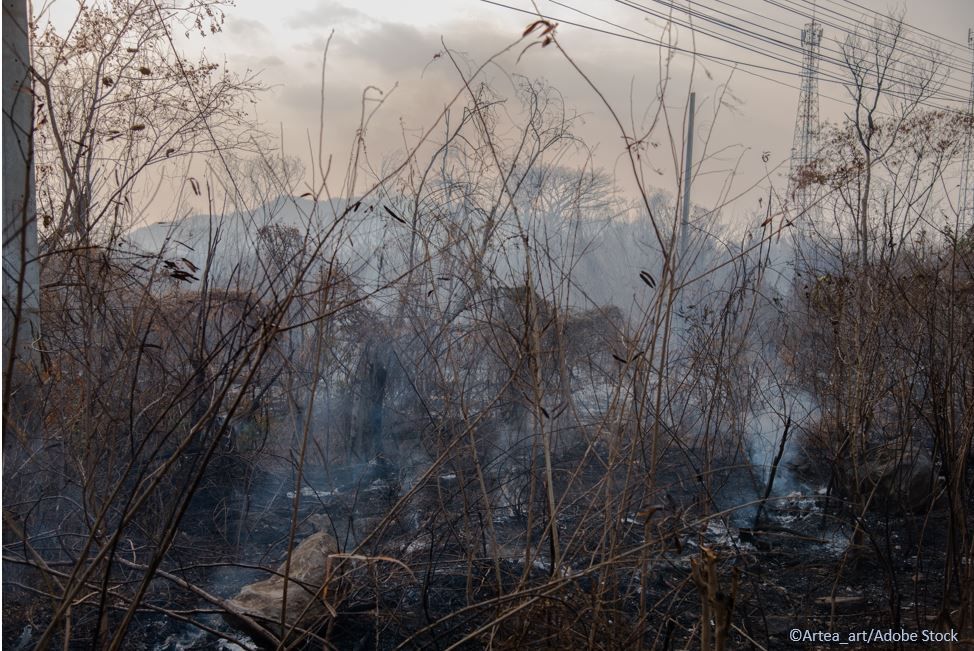Air Pollution Linked to Parkinson Disease with Regional Differences, Hot Spots Identified
People who live in areas of the United States with elevated levels of air pollution may be at higher risk of Parkinson disease, according to preliminary results of a new study to be presented at the American Academy of Neurology’s 75th Annual Meeting, April 22-27, in Boston.
Study authors cite a growing body of evidence for the role of environmental exposures in the pathogenesis of PD and other neurologic diseases, including dementia. They found a nationwide association between PD and exposure to air pollution, which varied in strength by region. There appeared to be dose-response association with risk of PD increasing with level of exposure, but there was also a celing effect, authors write .

Investigators were primarily interested in fine particulate matter less than 2.5 microns in diameter, referred to as PM2.5. There are many sources of fine particulate matter, they note, including motor vehicle exhaust, emissions from power plants and other industries that burn fuel, as well as forest and grass fires.
Using geographic methods, the team examined national rates of PD and then compared the rates to regional levels of air pollution, noted study author Brittany Krzyzanowski, PhD, of the Barrow Neurological Institute in Phoenix, Arizona, in an AAN press release.
For the population-based study, the researchers tapped data from more than 22.5 million Medicare beneficiaries in 2009 and identified 83 674 people with PD.
Average air pollution exposure levels were calculated at the ZIP code and county level using a data source on average air pollution and average annual concentrations of fine particulate matter. Participants were then sorted into 4 groups based on average exposure.
FINDINGS
People in the highest exposure group had an average annual exposure of 19 micrograms per cubic meter (µg/m3) of fine particulate matter. People in the lowest exposure group had an average annual exposure of 5 µg/m3. Among those with the highest exposure there were 434 new cases of PD for every 100 000 residents compared with 359 cases per 100 000 in the lowest exposure group.
The investigators found a number of geographic differences in the association between pollution and PD with the strongest observed in the Rocky Mountain region. In those counties the risk for PD rose by 16% when moving up from one level of fine particulate matter exposure to the next level. For the geographic analysis, researchers divided fine particulate matter exposure into 10 levels.
25% greater PD risk between high, low exposures
After adjusting for other factors that could affect PD risk, such as age, smoking, and use of medical care, researchers found a nationwide association between PD and average annual exposure to fine particulate matter, with people in the highest exposure group having a 25% greater risk of PD vs people in the lowest exposure group.
Higher rates of PD also were seen in a “hot spot” in the Mississippi-Ohio River Valley which includes Tennessee and Kentucky, but the research team said that the overall association with PD and air pollution was weaker there, with risk rising by 4% when moving up one level of fine particulate matter exposure to the next.
“Finding a relatively weaker association where we have some of the highest Parkinson’s disease risks and fine particulate matter levels in the nation is consistent with the threshold effect we observed in our data,” said Krzyzanowski in the AAN statement. “In the Mississippi-Ohio River Valley, for example, Parkinson’s disease risk increases with increasing air pollution exposure until about 15 µg/m3 of fine particulate matter, where Parkinson’s disease risk seems to plateau.”
Krzyzanowski hopes that mapping prevalent PD across the country and linking concentrations of the disease to levels of air pollution will serve as education on regional risks and prompt leaders to take steps to mitigate emissions.
A limitation of the study was that it focuses on fine particulate matter, which contains a variety of airborne pollutants, some of which may be more toxic than others. Air pollution is also associated with a variety of other health risks, including dementia, that might diminish the likelihood of PD diagnosis and this may explain the relatively weaker association between PD and particulate matter in the Mississippi-Ohio River Valley.
Abstract: Krzyzanowski B, Nielson S, Racette B. Fine particulate matter and Parkinson disease risk in Medicaire beneficiaries. Abstract presented at the American Academy of Neurology 75th Annual Meeting; April 22-27; Boston, MA.